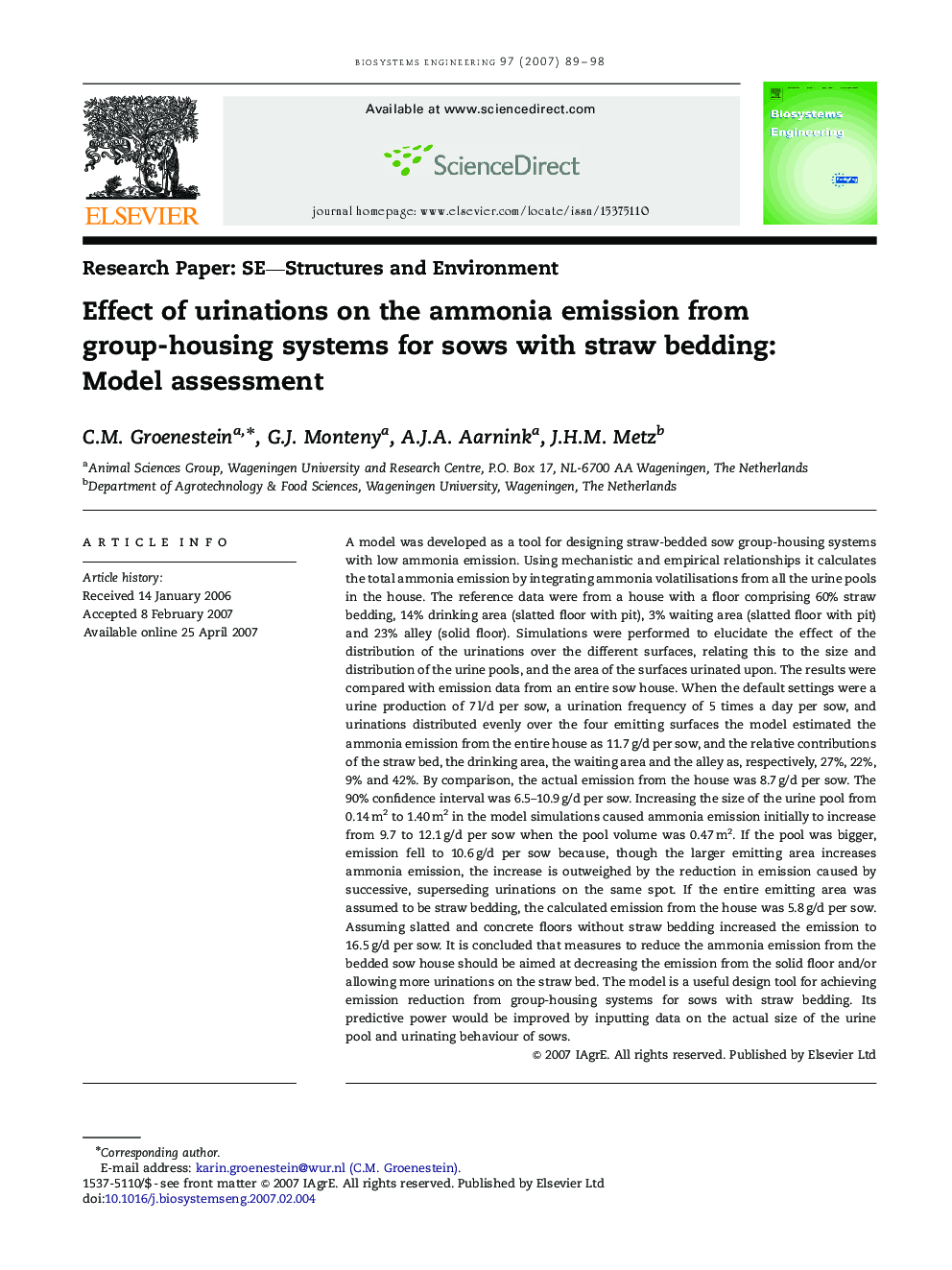| Article ID | Journal | Published Year | Pages | File Type |
|---|---|---|---|---|
| 1712466 | Biosystems Engineering | 2007 | 10 Pages |
Abstract
A model was developed as a tool for designing straw-bedded sow group-housing systems with low ammonia emission. Using mechanistic and empirical relationships it calculates the total ammonia emission by integrating ammonia volatilisations from all the urine pools in the house. The reference data were from a house with a floor comprising 60% straw bedding, 14% drinking area (slatted floor with pit), 3% waiting area (slatted floor with pit) and 23% alley (solid floor). Simulations were performed to elucidate the effect of the distribution of the urinations over the different surfaces, relating this to the size and distribution of the urine pools, and the area of the surfaces urinated upon. The results were compared with emission data from an entire sow house. When the default settings were a urine production of 7Â l/d per sow, a urination frequency of 5 times a day per sow, and urinations distributed evenly over the four emitting surfaces the model estimated the ammonia emission from the entire house as 11.7Â g/d per sow, and the relative contributions of the straw bed, the drinking area, the waiting area and the alley as, respectively, 27%, 22%, 9% and 42%. By comparison, the actual emission from the house was 8.7Â g/d per sow. The 90% confidence interval was 6.5-10.9Â g/d per sow. Increasing the size of the urine pool from 0.14Â m2 to 1.40Â m2 in the model simulations caused ammonia emission initially to increase from 9.7 to 12.1Â g/d per sow when the pool volume was 0.47Â m2. If the pool was bigger, emission fell to 10.6Â g/d per sow because, though the larger emitting area increases ammonia emission, the increase is outweighed by the reduction in emission caused by successive, superseding urinations on the same spot. If the entire emitting area was assumed to be straw bedding, the calculated emission from the house was 5.8Â g/d per sow. Assuming slatted and concrete floors without straw bedding increased the emission to 16.5Â g/d per sow. It is concluded that measures to reduce the ammonia emission from the bedded sow house should be aimed at decreasing the emission from the solid floor and/or allowing more urinations on the straw bed. The model is a useful design tool for achieving emission reduction from group-housing systems for sows with straw bedding. Its predictive power would be improved by inputting data on the actual size of the urine pool and urinating behaviour of sows.
Related Topics
Physical Sciences and Engineering
Engineering
Control and Systems Engineering
Authors
C.M. Groenestein, G.J. Monteny, A.J.A. Aarnink, J.H.M. Metz,
